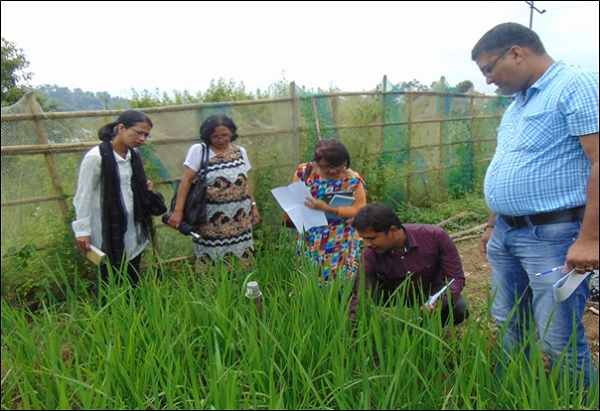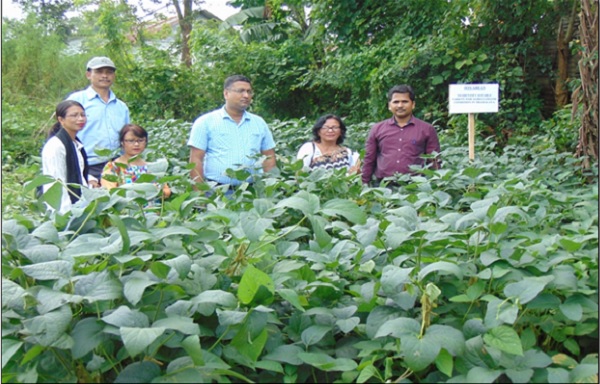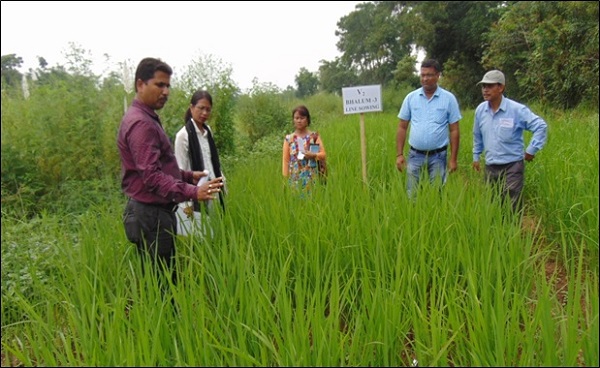Monitoring of adaptive trials in farmer’s field in collaboration with Department of Agriculture, Govt. of Meghalaya.
A monitoring team led by Dr. Anup Das, Head, Division of Crop Production, ICAR Research Complex for NEH Region, Umiam has evaluated the performance of different adaptive trials on lowland rice, upland rice, maize and soybean undertaken in Ri-Bhoi District on the 8th September, 2017. The other team members consisted of:
- Dr. Amit Kumar,Scientist(Plant Breeding), Division of Crop Production ICAR RC for NEH Region, Umiam
- Smt.V.M. Skhemlond ,A.D.A (Research),Department of Agriculture, Meghalaya
- Smt.B. Slong ,A.D.A (Seed Testing),Department of Agriculture, Meghalaya
- Smt. M. Najiar,S.O.(Soil),Department of Agriculture, Meghalaya
- Lam Nongtraw (Inspector Officer), Department of Agriculture, Meghalaya
- Daphibanri D Lyngdoh (Research Assistant, ICAR Seed Project) ICAR RC for NEH Region, Umiam
The team visited 3 sites located in Bhoirymbong, Ri-Bhoi.
Site1: Pyngkhrep Village
Six (6) varieties of rice namely RCPL 1-300, RCPL 1-145, RCPL 1-412, Bhalum-1, Bhalum-3 and Bhalum-5 were sown in upland conditions under organic management practices. Among these varieties, RCPL 1-300 performed better by producing more tillers and was relatively free from pest and diseases which was followed by RCPL 1-145. Local varieties of rice were also cultivated but their performance was poor as they were damaged by poultry birds. As far as maize is concerned, DA-61A followed by RCM-75 and 76 were found to be superior in performance for agronomic traits in comparison to varieties such as RCM 1-2 and local yellow.
Site2: Umlyngkor Village
Different varieties of soybean namely RCS 1-9, RCS 1-10, RCS 1-11, DSB-19 & JS-335 were sown under organic management practices at site 2 for comparing the performance of the varieties in terms of growth and yield. Among the varieties, RCS-10 performed better followed by DSB-19 & JS-335.
Site3: Umlyngkor Village
Different methods of rice establishment (viz., line sowing, broadcasting, ) with 3 varieties Bhalum-1,Bhalum-3 and local variety (Kba um) were cultivated at site 3.Among the three varieties,Bhalum-3 has maintained its superiority in all the three planting methods.


